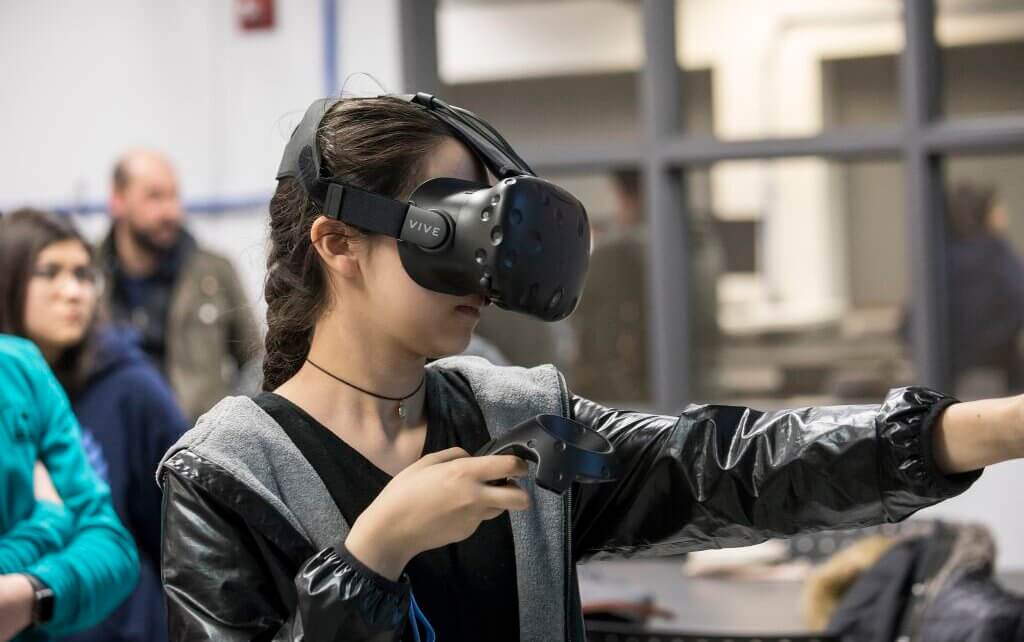The Monmouth University Department of Communication announced the addition of HawkInteractive as a practicum offering, creating another way for students to fulfill this graduation requirement.
Communication students are required to complete one credit of practicum. Previously, this could be accomplished through involvement in WCMX, Hawk TV, The Outlook, Public Relations Student Society of America (PRSSA), CommWorks, or Monmouth Oral Communication Center (MOCC). Now, students are also able to meet this requirement through HawkInteractive, a student media organization affiliated with the department’s interactive digital media (IDM) program.
According to the course description on the Communication website, practicum through HawkInteractive “serves as an opportunity for students to further develop their interactive media skills, work as part of a design team, and to grow their media portfolio with a focus on emerging media tools and platforms.”
“HawkInteractive is a creative, exploratory, and collaborative club where students can try out various IDM technologies. Some of those include 3D printers, drones, 360 Cameras, Adobe Creative Cloud, Unity, and more. Every few weeks we host workshops where we teach one of these technologies/programs, and then club members will get hands-on experience to learn how to use them,” described Skylar Smith, graduate IDM student and president of HawkInteractive.
“Aside from fulfilling practicum requirements, this club provides a welcoming environment where people from all academic backgrounds and skill sets can come together to create and learn. Interactive digital media is a growing field, but it is useful for everyone, not just communication students,” she continued.
Entering its second year as a student organization, HawkInteractive remains new to the Monmouth University community. The IDM program as a whole was only introduced to the communication department in 2016, starting off as a mere proposal that was eventually accepted by the graduate studies committee and later adopted into communication curriculum in 2019.
“The IDM Lab is such a special space. There’s a lot of places that have these programs but really don’t have the infrastructure to support the work. In 2019, that’s when I came and we established the IDM Lab mission statement and started the course offerings. Since then, the IDM program has grown, especially the concentration in the graduate program,” explained Amanda Stojanov, Assistant Professor of Digital Media and Co-Principal Investigator of the IDM Research Lab.
“What HawkInteractive does is really invite people from outside of the community to be able to access these tools,” continued Stojanov. “Even on our e-board, we have an IDM graduate student as president, but the rest of the e-board is made up of students from different majors – psychology, criminal justice, history.”
“It’s pretty broad. We want to be inclusive. We think there’s value in these tools servicing any discipline, and it’s okay to just be curious about something. It doesn’t have to serve your job or your future interests. We want to include people’s curiosities and invite them in,” added Dickie Cox, Associate Professor of Interactive Digital Media.
“HawkInteractive gives students hands-on experience outside of the classroom. It’s where they get to explore their interests and take some chances to come up with something that’s resume ready,” described Aaron Furgason, Ph.D, Chair and Associate Professor of Communication, who predicted that IDM will soon be seen as an employable opportunity as technologies like virtual and augmented realities become the new normal. “It’s all relatively new, so everybody’s trying to figure out how to use it.”
“We’re still kind of seeding the soil to see how it can expand. With just two people focusing on the classes, it’s a small work group to hold all of these possibilities that the lab has to offer,” explained Stojanov. “My hope is as we gain students, everybody tries something different and the work comes out of their interests so we can see growth in different areas based on where students invest their time.”
“As HawkInteractive gains some students who have done this work, I hope that that can serve as a way of melding what people are learning in the different classes and bringing it together and acting as a bigger design team,” added Cox.
Currently, IDM is only seen within the interactive media minor, the communication major’s media studies and production cluster, and the IDM concentration at the graduate level.“In the future, I would love to see IDM become a stand-alone MA or MFA program that includes even more interdisciplinary courses in Health, Business, Art, and Computer/Data Science,” said Deanna Shoemaker, Ph.D., Associate Professor of Communication and Performance Studies and Graduate Director of the Master’s in Communication.
Beyond HawkInteractive, students are able to gain experience in IDM through various course offerings at both the undergraduate and graduate level. Interactive Media Productions was recently added as an undergraduate class, which focuses on creating digital performances using innovative technologies.
“The goal is to craft high impact stories that matter in the world,” explained Shoemaker, who teaches the course alongside Stojanov. “This interdisciplinary course allows students to collaborate on projects that integrate storytelling, marketing and design, worldbuilding, and innovative uses of audio and video in digital realms.”
Between student organizations and various course offerings, IDM has become an established program and an integral component of the University’s communication department. “I think students would be crazy not to take advantage of it,” concluded Furgason.



